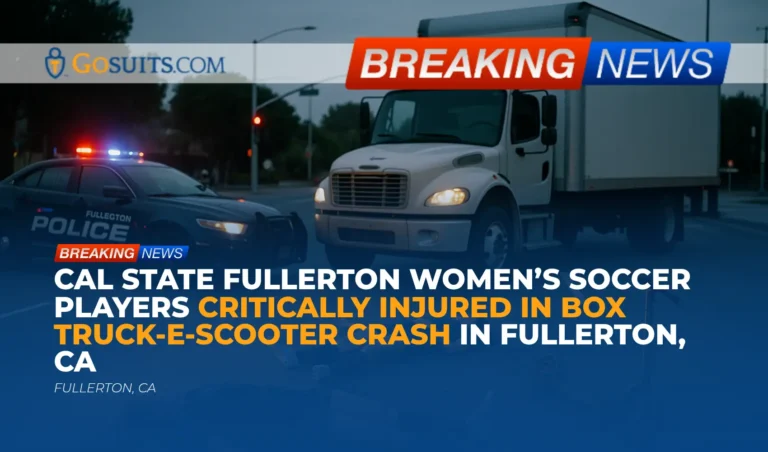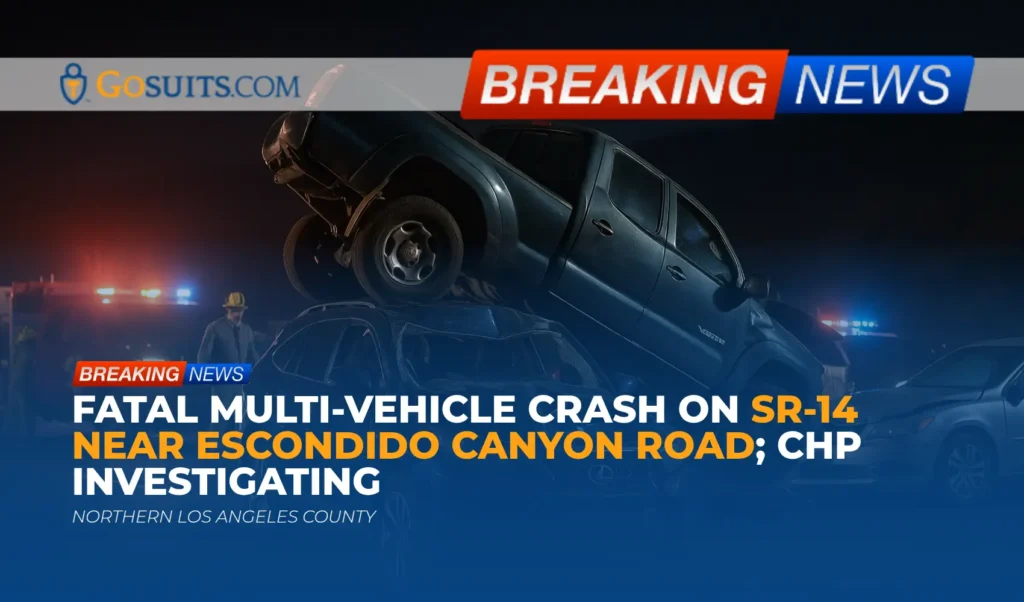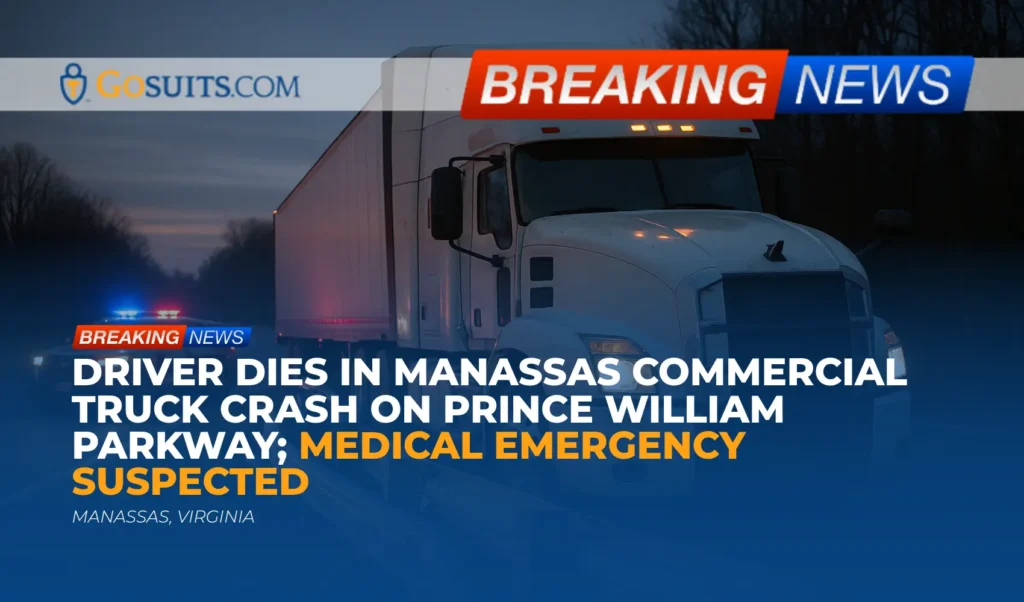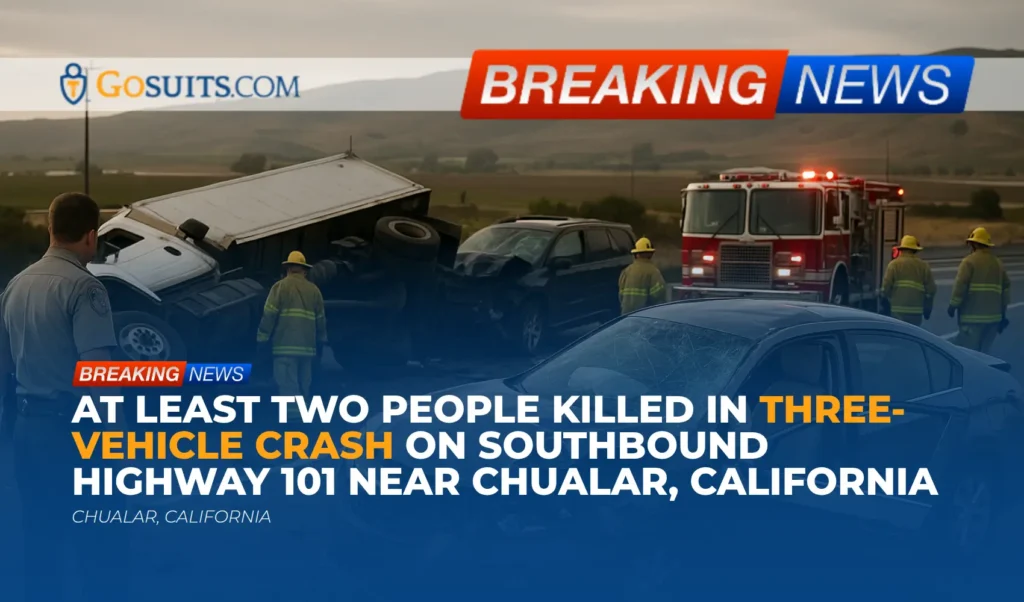- Incident overview
- What authorities and the university have said
- Safety context, helmet research, and e-scooter risks
- California e-scooter rules that may apply
- Possible civil liability and rights after a box truck and e-scooter collision
- Evidence to preserve early
- Where to get key records and information
- Insurance issues after a serious micromobility crash
- Time sensitive steps after a severe injury crash
- Campus and community response
- Commentary from Gosuits Fullerton, California Personal Injury Attorney
Incident overview
Two students from Cal State Fullerton’s women’s soccer program were seriously injured when a box truck struck them as they rode e scooters around 7 p.m. on Saturday, September 27, near Associated Road and Yorba Linda Boulevard in Fullerton. Police reported finding both riders in the roadway with significant, life threatening injuries. The crash remains under investigation, and police indicated that impairment does not appear to be a factor. According to statements from the team, the riders were not wearing helmets at the time.
Both student athletes remain hospitalized in intensive care. Family updates shared publicly describe severe head trauma for one of the riders. In the aftermath, the head coach instituted a helmet rule for players who use e scooters or e bikes, and other collegiate programs have reportedly done the same after learning of the collision.
What authorities and the university have said
Location and time
The collision occurred near the intersection of Associated Road and Yorba Linda Boulevard in Fullerton in the evening hours. This is a highly trafficked corridor near campus, with a mix of vehicular and micromobility travel.
Current status of the investigation
Fullerton police stated the crash is under active investigation. No additional details about fault, speed, or precise movements of the vehicles were available at the time of the updates. Investigators said alcohol and drugs are not suspected. Because a commercial vehicle was involved, the driver’s employer and the company’s insurer may also be involved in the post collision review.
University and team response
Cal State Fullerton leadership and the athletics department have visited with families at the hospital. The women’s soccer program implemented a requirement that athletes wear helmets when riding e scooters or e bikes. Coaches from other programs have reportedly adopted similar measures after hearing about the injuries.
Safety context, helmet research, and e-scooter risks
Micromobility devices, including stand up e scooters, have expanded rapidly in recent years. With growth comes risk. Government data show rising injuries and deaths associated with these devices, and studies consistently document low helmet use among injured riders.
Injury trends
- Growth in emergency department visits. The U.S. Consumer Product Safety Commission has tracked injuries tied to micromobility products. CPSC reported substantial increases in e scooter injuries over recent years, along with dozens of fatalities nationally. See CPSC reports on micromobility hazards and injury trends for details at cpsc.gov.
- Head injuries are common. A collaborative Austin city and CDC study of dockless e scooter injuries found head injuries were frequent, and only a very small fraction of injured riders were wearing helmets at the time. The study materials are available from Austin Public Health at austintexas.gov.
Helmet use and prevention
- Helmets reduce the risk and severity of head injuries. For cyclists and other riders, helmet use is associated with lower rates of head injury and traumatic brain injury. Federal safety agencies emphasize helmets as a core protective measure. See helmet safety guidance at cdc.gov and nhtsa.gov.
- E scooter helmet compliance remains low. The Austin e scooter study found that helmet wearing among injured riders was rare within the sample, even though head injuries were frequent. The findings underscore why many schools and teams are now promoting or requiring helmets during off field travel. Source at austintexas.gov.
While no single intervention eliminates risk, simple actions like wearing a properly fitted helmet, riding in permitted lanes, and maintaining device control meaningfully reduce the chance of catastrophic injury.

California e-scooter rules that may apply
California regulates stand up electric scooters under the Vehicle Code and DMV guidance. The rules below are general. They do not determine fault in this specific crash, which will depend on evidence gathered by investigators.
- Helmet requirement. Riders under 18 must wear a helmet while operating an e scooter. For adults, helmet use is strongly encouraged, though not required by statute. See the DMV summary at dmv.ca.gov.
- Driver licensing. An e scooter operator must have a valid driver license or permit. DMV guidance is available at dmv.ca.gov.
- Speed and location. The maximum speed for e scooters in California is 15 mph, and riders generally must use bike lanes where provided, and may not ride on sidewalks. See the DMV’s rules at dmv.ca.gov.
- Reporting serious collisions. If any person is injured or property damage exceeds the DMV threshold, California requires submitting a Traffic Accident Report SR 1 to DMV within 10 days, regardless of fault or insurance. See dmv.ca.gov.
These rules exist alongside the general duties all road users owe each other, including operating with reasonable care, maintaining safe speeds, yielding when required, and keeping a proper lookout.
Possible civil liability and rights after a box truck and e-scooter collision
When a commercial box truck collides with micromobility riders, the civil analysis focuses on how and why the collision happened and whether any person or company failed to use reasonable care. The investigation will also look at injury causation and damages. The points below explain how these cases are commonly evaluated in California.
- Driver negligence. A truck driver can be civilly liable if they failed to use reasonable care, for example by making an unsafe turn, failing to yield, following too closely, not keeping a proper lookout, or violating traffic controls. Evidence from scene measurements, vehicle damage, and witness accounts often matters more than initial assumptions.
- Employer responsibility. If the driver was in the course and scope of employment, the company that owns or operates the box truck is typically responsible for the driver’s negligence under the doctrine of respondeat superior. Company level issues such as negligent hiring, retention, or training can also be investigated where evidence supports those claims.
- Roadway and infrastructure factors. In some crashes, sight lines, signage, lighting, or lane markings may be relevant. Claims against public entities follow strict notice and timing rules in California. Evaluating these issues requires careful factual development.
- Comparative fault. California uses comparative fault principles. If more than one party contributed to a crash, responsibility can be apportioned. This does not bar recovery, but it can affect how compensation is allocated. The California Courts Self Help resources discuss how shared fault can be considered in civil cases at courts.ca.gov.
- Helmet use. Helmet use can influence injury severity. In California, the effect of not wearing a helmet on civil damages depends on many factors including the type of injuries and the specific evidence on causation. It is a nuanced issue that should be assessed with the medical record and biomechanical facts in hand.
- Insurance layers. Commercial vehicles typically carry higher liability limits. There may also be excess or umbrella policies, and in some circumstances uninsured or underinsured motorist coverage can be relevant for injured riders, depending on the policies available to them.
Because serious brain injuries and polytrauma often require long term care, the documentation of past and future medical needs, caregiving, rehabilitation, and vocational impacts becomes central. Early coordination with treating providers helps ensure the record accurately reflects the real trajectory of recovery and need.
Evidence to preserve early
Evidence deteriorates quickly after roadway crashes. Preserving it promptly protects everyone’s ability to understand what happened.
- Scene evidence. Photographs of the intersection, skid or scuff marks, debris fields, lighting conditions, and temporary traffic controls. Even days later, photos can capture fixed features such as signal heads, signage, and sight obstructions.
- Vehicle data. Commercial trucks may have electronic control modules that record limited speed or braking information. Company dispatch and telematics systems can include GPS tracks, duty logs, and messaging. Requesting preservation early is critical.
- Device data. If the scooters were part of a shared fleet, ride data, GPS, and timestamps can often be requested from the provider. If they were privately owned, preserve any onboard device data, app activity, or phone based fitness or location logs tied to the ride.
- Witness identification. Names and contact information for anyone who saw the crash, heard statements, or arrived immediately after. Independent witnesses can be especially important where fault is disputed.
- Medical documentation. EMS run sheets, emergency department records, operative reports, and treating provider notes that document symptoms, findings, and progress. Individuals have a right to obtain their medical records under federal privacy rules, see guidance from the U.S. Department of Health and Human Services at hhs.gov.
- Public records. Police traffic collision reports, supplemental diagrams, and any cited code sections. If a traffic signal or lighting issue is suspected, relevant maintenance or work orders can sometimes be requested from the local agency.
Where to get key records and information
The list below outlines where families often turn for documentation in a serious crash. Each agency has its own procedures and timelines, and most require a case number or basic identifiers to search for records.
- Police traffic collision report. Request from the investigating police department’s Records Unit for the city where the crash occurred. Provide the date, location, and names of involved persons if known. If the California Highway Patrol handled the collision, use the CHP portal for collision report requests at chp.ca.gov. City police departments have similar request processes, and many accept requests online or by mail.
- 911 audio and CAD logs. Dispatch recordings and computer aided dispatch logs can establish timing and initial observations. These may be requested from the city’s police or regional communications center, subject to applicable exemptions and retention schedules.
- EMS and fire reports. Paramedic run sheets and fire department records describe initial condition, Glasgow Coma Scale, vitals, and interventions. Contact the responding fire department’s records office for release procedures, often requiring patient authorization.
- Hospital records. Individuals can request their medical records directly from the hospital’s Health Information Management department. Federal guidance on access rights is at hhs.gov.
- Coroner or medical examiner. In fatal cases, autopsy and investigation records in Orange County are handled by the Sheriff Coroner. See the Coroner Division information at ocsheriff.gov.
- DMV accident reporting. If statutory reporting thresholds are met, submit the SR 1 to the DMV within 10 days. Information and the form are at dmv.ca.gov.
When requesting records, include any police report number, incident number, or medical record number if available. Retain proof of requests and responses for your files.
Insurance issues after a serious micromobility crash
Collisions involving commercial box trucks raise complex insurance questions. Multiple policies may apply, and insurers often move quickly to minimize exposure. It is prudent to speak with a qualified attorney before giving recorded statements, signing medical releases, or accepting any early offer. Statements to insurers can be used later in ways that affect a civil claim.
- Commercial auto liability coverage. The truck’s primary liability policy is usually the first layer. There may be excess or umbrella coverage depending on the employer’s risk structure.
- Employer policies. If the driver was working, the employer’s policies may respond under vicarious liability. Policy discovery and verification typically occur after a claim is opened.
- Uninsured or underinsured motorist. Riders sometimes have UM or UIM coverage through their household auto policies. This can be relevant if the at fault coverage is insufficient, subject to exclusions and offsets.
- Med Pay and health insurance. Medical payments coverage may be available on some policies. Health insurers that pay treatment costs often assert reimbursement claims from any recovery, subject to California law and policy terms.
- E scooter platform terms. If a shared scooter was involved, rental terms can affect available coverages and dispute forums. Policies vary widely by company and state. Do not assume those terms prevent a third party negligence claim against a driver or employer.
Insurers frequently request broad medical authorizations or push for quick resolutions before the full scope of injuries is known. Early legal guidance helps protect privacy, ensures accurate documentation of injuries, and positions a claim for a fair evaluation based on the complete picture.
Time sensitive steps after a severe injury crash
The period after a catastrophic injury is overwhelming. A few early actions can make a meaningful difference later, both for safety and for any civil claim that may follow.
- Prioritize medical care and follow up. Keep every follow up appointment, and ask providers to document all symptoms, cognitive changes, and functional limitations. Rehabilitation and therapy plans should be in writing.
- Preserve evidence. Secure the scooters, rider gear, and any damaged clothing. Save all photos, videos, and location data. Ask a trusted person to photograph the intersection from multiple vantage points at similar times of day.
- Request records. File requests for the police traffic collision report, EMS records, and hospital records as soon as practical. Maintain a binder or secure digital folder with all documents and receipts.
- Notify insurers carefully. Policies often require prompt notice. Before calling any insurer, consider speaking with an attorney to understand what must be disclosed and what can wait until more information is available. What is said early can be used later in ways that are hard to unwind.
- Track losses. Keep a contemporaneous log of time missed from school or work, help required for daily activities, mileage to care, and out of pocket expenses. Save invoices and proof of payment.
- Calendar deadlines. California has strict time limits for civil claims, and shorter claim presentation deadlines can apply when a public entity is involved. Do not wait to find out which rules apply.

Campus and community response
The Cal State Fullerton community has rallied to support the two injured students and their families. The women’s soccer program adopted a helmet rule for e scooters and e bikes, and coaches across other programs have reportedly followed suit. University leaders have spent time with the families at the hospital, reflecting the care and concern felt across campus.
These gestures cannot erase the trauma, but they highlight a central truth about severe injury cases. Healing requires both medical care and community support. When injuries affect schooling, athletics, and daily life, it is important to build a comprehensive plan that centers the person, not just the case file.
Commentary from Gosuits Fullerton, California Personal Injury Attorney
Our hearts are with the two student athletes who were gravely injured, with their families, and with the teammates and coaches who are carrying the weight of uncertainty. What follows is educational information meant to help the public understand the civil issues that often arise after a crash like this. Every situation is unique and should be evaluated based on its specific facts and evidence.
In our view, this collision raises the questions that are common when a large commercial vehicle meets a vulnerable road user at or near a busy intersection. Intersections are complex environments, and professional drivers have a heightened responsibility to scan for people who are harder to see. The involvement of a box truck suggests that company policies, route planning, schedule pressures, and driver training may all be part of a thorough review. The helmet rule adopted by the team is a compassionate, proactive step for future safety, yet helmet use does not answer the central question in a civil case, which is why the crash happened and whether it was avoidable with reasonable care.
Insurance carriers and corporate risk departments often move quickly after a serious injury. They may try to take recorded statements before anyone has all the facts, request broad medical authorizations, or frame the narrative in ways that minimize their exposure. People recovering from trauma are focused on health, not the fine print of multi layer insurance programs. That information gap is where claims can be undervalued or rights overlooked. Having a seasoned advocate explain obligations, protect privacy, and manage communications helps restore balance. It creates space for recovery while ensuring that the evidence is preserved and the claim is properly documented.
There is real value in a free consultation before engaging with insurers. It costs nothing to understand which deadlines apply, what documents to request, and how to avoid common pitfalls. A brief conversation can clarify whether a commercial policy, an employer, a public entity, or a private party is likely to be involved, and what that means for next steps. Knowledge is empowerment, especially when decisions made in the first days can echo through the entire recovery and claims process.






